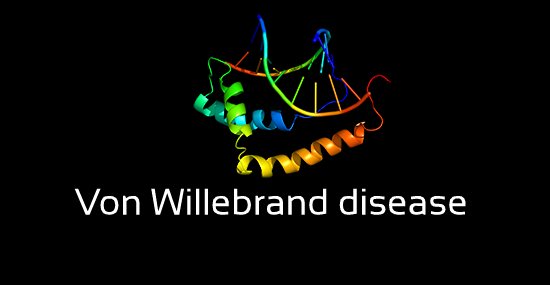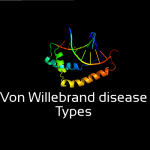Von Willebrand disease (VWD) Types Symptoms Causes and Treatment
What is von willebrand disease and is there a cure for von willebrand disease?
Von willebrand disease (VWD, болезнь Виллебранда) is a common inherited bleeding disorder affecting more than 1.2% of all humans. VWD is a lifelong condition caused by an absent or ineffective von Willebrand factor (VWF), a blood protein essential for blood clotting, and thus there is no cure for it; However, treatment can help to keep the condition under control, with proper treatment, individuals with VWD can enjoy a normal life as long as they avoid physical activities, as physical activities carry some risk of injury. Rarely, Von willebrand disease (vwd) can occur spontaneously at any age.
Patients with Von willebrand disease will have a very prolonged bleeding time, as blood takes a longer than normal time to clot.
Unfortunately, while von willebrand disease is one of the most common bleeding disorders, patients with vwd are more likely to be misdiagnosed or undiagnosed by doctors, as symptoms of von willebrand disease vary greatly from individual to individual and severity of symptoms can range from completely asymptomatic to mild symptoms, and thus it can be easily ignored or attributed to other causes. In most cases, symptoms of vwd occur usually after a minor injury, or trauma; However, rarely, symptoms may occur spontaneously.
What are the symptoms of von willebrand disease?
Symptoms of von Willebrand disease include:
- Frequent nosebleeds
- Easy bruising
- Heavy menstrual bleeding that lasts about 5 to 6 days
- Bleeding after taking nonsteroidal anti-inflammatory drugs (NSAIDs)
- Excessive bleeding after tooth extraction
- Abnormal bleeding after medical procedures
- Unusual bleeding from your gums
- Abnormal bleeding from minor injuries
Less commonly, more serious symptoms can occur. Those symptoms might include: Internal bleeding into your muscles or joints.
What causes von willebrand disease?
Von Willebrand factor (VWF) is an essential blood protein that helps in blood clotting. Clots form at the site of wound to stop bleeding.
People with von willebrand disease (vwd) must have one of the following two conditions:
- They don’t have enough VWF
- They have a mutated form of VWF. As a result, the malfunctioning protein can cause excessively prolonged bleeding time.
What are the different types of von willebrand disease?
Von willebrand disease (vwd) is medically classified into three primary types:
- Type 1- VWD
- Type 2- VWD
- Type 3- VWD
The classification is based purely on the following two factors:
- The severity of the condition
- Whether the disease originates from an absent/mutated VWF.
It is very important to determine the type of von willebrand disease (vwd) because different types require different therapeutic courses.
Treatment should be directed toward relief of symptoms (symptomatic treatment). Currently, most therapies used for bleeding disorder management are directed to prevent bleeding problems, in VWD this is usually accomplished by increasing the concentration of VWF and factor VIII (antihemophilic factor or AHF) simultaneously.
FVIII is a blood protein essential for blood clotting. Moreover, FVIII is a key component of the intrinsic clotting cascade (the contact activation pathway) that results in the formation of a fibrin clot
The blood clotting system is a proteolytic cascade that involves activation of the coagulation cascade, platelet activation, platelet adhesion, and platelet aggregation (aggregation of thrombocytes) along with fibrin deposition.
Read more
What are the different types of von willebrand disease?
What are the symptoms of von willebrand disease?
How to treat Von Willebrand Disease?
References
Verified by: Dr.Diab (November 5, 2017)
Citation: Dr.Diab. (November 5, 2017). Von Willebrand disease (VWD) Types Symptoms Causes and Treatment. Medcoi Journal of Medicine, 22(2). urn:medcoi:article2434.














There are no comments yet
Or use one of these social networks